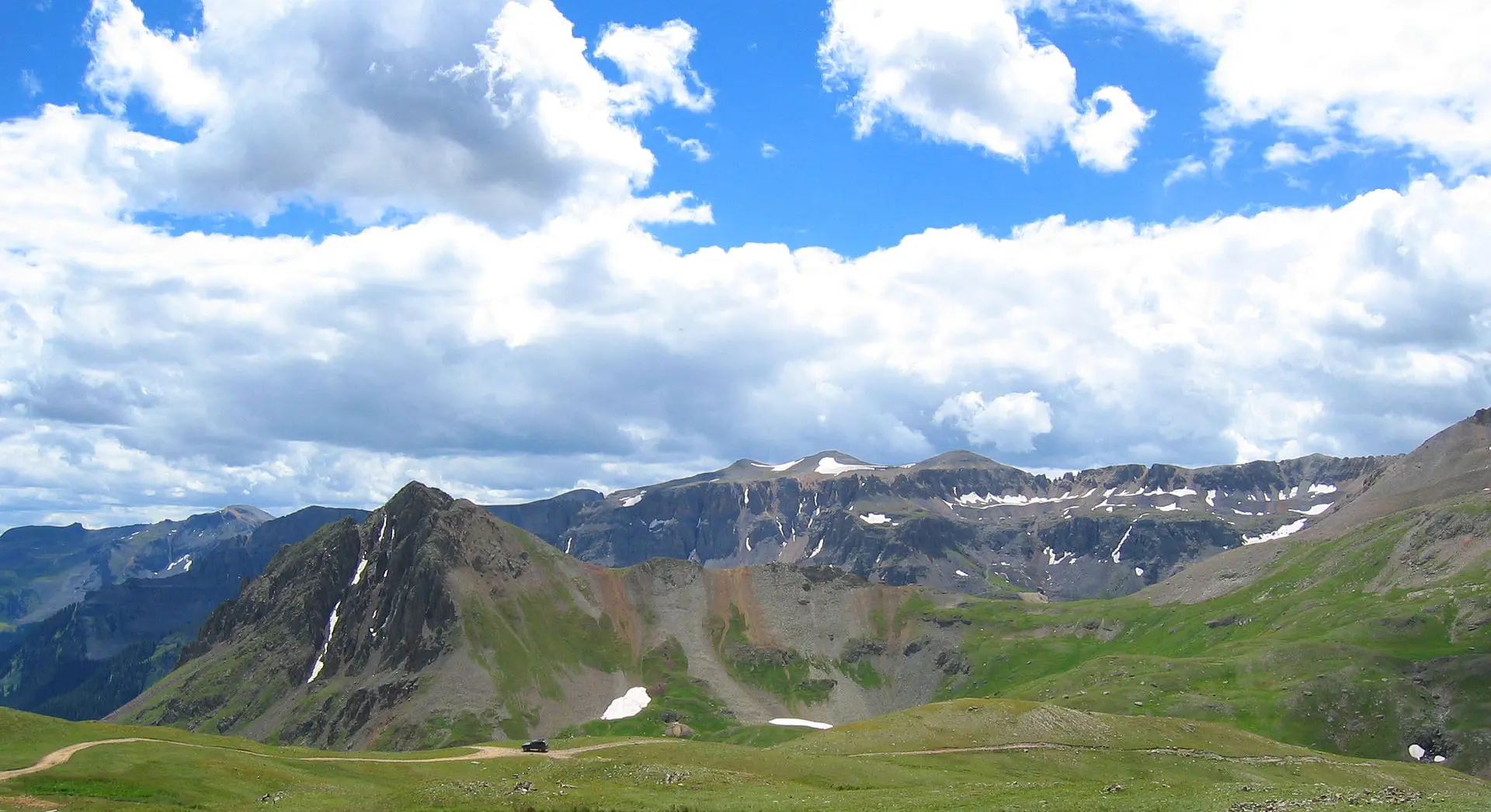
Yankee Boy Basin: Colorado's Premier Jeep Destination Guide
Yankee Boy Basin: Where Alpine Beauty Meets Real Adventure
Here's what most people get wrong about Yankee Boy Basin: they think it's just another pretty mountain meadow with some flowers you can drive to on a Saturday afternoon.
The reality? This place represents something far more interesting—a genuine intersection where nature's brief alpine growing season collides with technical off-road challenges at elevations where both your engine and your lungs struggle to keep up. It's where geology, biology, and mechanical capability converge in a high-altitude basin that reveals its full magnificence only to those who understand what they're actually attempting.
Beyond the Postcard Image
Most visitors experience maybe 30% of what Yankee Boy Basin actually offers. They show up during peak season, navigate the easier lower sections, snap some photos of columbines, and head back down thinking they've "done" Yankee Boy Basin. What they miss is the deeper reality of why this specific basin produces wildflower displays that photographers travel across continents to capture, and why the route demands genuine preparation rather than optimistic hoping.
The difference comes down to understanding what you're really dealing with:
Alpine ecology operating on borrowed time: Wildflowers here exist in a compressed growing season measured in weeks, not months, where timing isn't just important—it's everything
Technical terrain disguised by beauty: Rock obstacles, sustained grades, and shelf roads that test vehicle capability while you're distracted by the scenery
Altitude effects that compound every challenge: At 11,000+ feet, your judgment, your vehicle's cooling system, and your physical stamina all operate at reduced capacity
Weather patterns that transform conditions within minutes: Afternoon thunderstorms develop with predictable regularity, creating lightning exposure in an open alpine basin with limited escape routes
Why Yankee Boy Basin Earned Its Legendary Status
Yankee Boy Basin didn't become one of Colorado's most photographed wildflower destinations by accident. The reputation comes from a specific combination of geological forces, climatic conditions, and human history that converged in this particular bowl-shaped valley beneath Mount Sneffels—creating conditions that produce wildflower displays you simply won't find anywhere else, even in regions with similar elevation and terrain.
The Geology and Geography Behind the Blooms
The basin's wildflower supremacy stems from geological factors that took millions of years to establish. The bowl shape captures moisture and creates protected microclimates, while volcanic soils provide mineral-rich growing medium that supports exceptional plant diversity. The surrounding peaks shelter the basin from harsh prevailing winds while allowing enough exposure for optimal sunlight during the brief alpine growing season.
Geological advantages that create wildflower paradise:
Glacial sculpting: Ancient ice carved the basin into a natural amphitheater that traps snowmelt and creates consistent soil moisture throughout the growing season
Mineral-rich volcanic soils: Decomposed volcanic rock provides nutrients that support dense plant populations and vibrant bloom colors
Elevation zoning: The basin spans multiple altitude bands, creating diverse habitats where different species bloom at staggered intervals
Natural irrigation: Snowmelt from surrounding peaks feeds numerous streams and seeps that maintain soil moisture even during dry periods
South-facing exposure: Optimal sun angles during peak season maximize photosynthesis while the bowl shape prevents excessive wind damage to delicate blooms
The Mining Legacy That Built Access
The roads that now carry wildflower enthusiasts into Yankee Boy Basin exist because miners in the 1890s needed supply routes to reach gold and silver deposits high in the San Juan Mountains. The Yankee Boy Mine and the legendary Camp Bird Mine drove construction of routes that would have been economically impossible to justify for recreation alone.
Tom Walsh discovered the Camp Bird vein in 1896, eventually extracting over $26 million in gold—a fortune that built the infrastructure adventurers still use today. The engineering challenges miners faced—sustained grades, rock obstacles, exposure to weather—remain identical to what modern vehicles encounter, except now we traverse these routes by choice rather than necessity.
This historical context matters because it explains both why the roads exist in such demanding terrain and why they follow specific routes that balance accessibility with the technical challenges that made them expensive to build and maintain. Understanding this heritage adds depth to the experience while providing perspective on why certain sections present particular difficulties—these weren't designed as recreational trails but as utilitarian supply routes where efficiency mattered more than comfort.
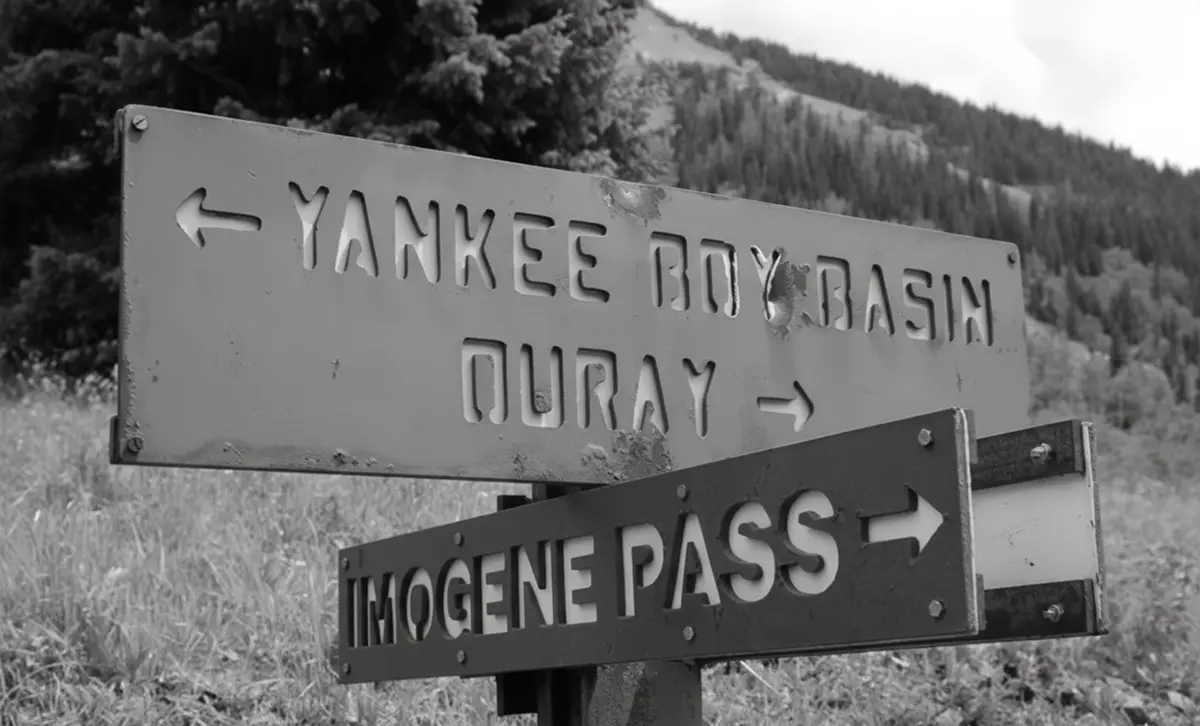
The Technical Reality of High-Altitude Alpine Access
The elevation gain from Ouray to Yankee Boy Basin creates atmospheric conditions that affect every aspect of your adventure—from how your engine performs to how clearly you think when navigating technical obstacles. Understanding these effects separates successful basin visits from frustrating experiences where mechanical or human limitations surface at the worst possible moments.
Elevation and Atmospheric Challenges
Starting at Ouray's 7,700-foot elevation and climbing to over 11,000 feet in the basin means ascending through nearly 3,500 vertical feet where atmospheric pressure drops significantly with each thousand feet gained. This isn't abstract physics—it's concrete reality that manifests in engine performance, cooling system demands, and your body's ability to function effectively.
The atmospheric pressure at basin elevation sits roughly 25-30% lower than sea level, which creates measurable performance degradation in both mechanical and biological systems. Your naturally aspirated engine loses power proportionally to the air density decrease, while your brain receives less oxygen per breath, affecting cognitive functions you rely on for safe driving decisions.
Physical and mechanical effects at Yankee Boy Basin elevation:
Engine power loss: Naturally aspirated engines lose 25-30% of their sea-level horsepower, reducing acceleration and hill-climbing capability exactly when sustained grades demand maximum power
Cooling system stress: Reduced air density decreases radiator efficiency while sustained climbing generates more heat, creating conditions where marginally adequate cooling systems fail
Fuel mixture complications: Engines running rich or lean due to altitude can experience reduced efficiency, rough running, and increased temperatures
Human cognitive impairment: Reaction time slows by 15-20%, decision-making becomes clouded, and fatigue accumulates faster than at lower elevations
Physical performance reduction: Shortness of breath, headaches, and general fatigue onset earlier and more intensely, especially for visitors arriving from near sea level
Quick altitude management tips: Arrive in Ouray the night before to acclimate partially, stay well-hydrated starting 24 hours before your trip, monitor engine temperature gauges continuously during climbs, and recognize that feeling "fine" doesn't mean your judgment and reaction time aren't impaired.
The Wildflower Phenomenon Explained
The wildflower displays that make Yankee Boy Basin legendary operate on biological timelines compressed by altitude and latitude into a narrow window where an entire growing season unfolds in weeks rather than months. Understanding these patterns transforms random hoping into strategic planning that dramatically increases your chances of witnessing peak bloom conditions.
Alpine plants at this elevation face a brutal reality: they must complete their entire reproductive cycle—sprouting, growing, flowering, and setting seed—in the brief window between snowmelt and the return of killing frosts. This compressed timeline creates the intense, concentrated displays that make certain weeks in late July and early August absolutely spectacular, while visits just two weeks before or after can miss the peak entirely.
The basin's elevation range creates staggered bloom progression as you climb higher, with lower elevation flowers peaking first while upper elevation species wait for snowmelt to release them. This staging effect extends the overall season slightly but emphasizes the importance of timing—hit it right, and you'll see multiple elevation zones in simultaneous peak bloom.
Key wildflower species and their bloom characteristics:
Colorado Columbine (state flower): Delicate white and lavender blooms typically peak mid-to-late July in sheltered areas with consistent moisture
Indian Paintbrush: Vibrant red-orange bracts create dramatic color masses, blooming throughout late July into early August
Alpine Sunflowers: Large yellow blooms on tall stalks dominate upper elevation areas, typically peaking in early August
Larkspur: Purple-blue spikes appear in dense colonies, blooming mid-July through early August depending on elevation
Mountain Bluebells: Sky-blue clusters thrive near water sources, blooming early-to-mid July in lower sections
The Route: Technical Challenges Section by Section
The road to Yankee Boy Basin doesn't present its challenges uniformly—instead, difficulty escalates in distinct sections that each demand different skills and vehicle capabilities. Understanding what each segment requires allows you to assess whether your equipment and experience match the demands before you're committed to technical sections where turning around becomes complicated or impossible.
Lower Section: Ouray to Camp Bird Road
The initial miles from Ouray establish baseline expectations that, while relatively mild compared to upper sections, still exceed what most drivers encounter in normal off-road situations. This section sorts casual sightseers from committed adventurers through conditions that, while manageable, signal clearly what lies ahead.
The Camp Bird Road begins as maintained gravel that progressively transitions to rougher surfaces as you gain elevation. The road surface alternates between packed dirt, loose gravel, and embedded rock depending on recent weather and maintenance schedules. Width remains adequate for two-way traffic in most locations, though dust from oncoming vehicles can temporarily obscure visibility during dry conditions.
Lower section characteristics:
Initial 3-4 miles: Well-maintained gravel road suitable for high-clearance vehicles, with moderate grades that test cooling systems without overwhelming them. This section provides opportunity to assess vehicle performance and turn back if systems show early stress indicators.
Surface transitions: Road character changes from graded gravel to more primitive conditions as you approach Camp Bird Mine area. Embedded rocks become more frequent, requiring attention to wheel placement and suspension articulation even though technical difficulty remains moderate.
Traffic density during peak season: Popular timing (late July weekends) brings significant traffic that creates passing challenges, dust clouds, and delays at narrow sections. Early morning departures largely avoid these complications while afternoon descents coincide with upward-bound traffic creating bottlenecks.
Pro tips for the lower section: Use this segment to evaluate your vehicle's cooling system performance—if temperatures creep toward redline on these moderate grades, upper sections will overwhelm marginal systems. Engage 4WD early rather than waiting until traction becomes marginal, as shifting into 4WD mid-obstacle risks drivetrain stress. Keep speed moderate to minimize dust generation for vehicles behind you and to maintain control on loose gravel surfaces where braking distances extend significantly.
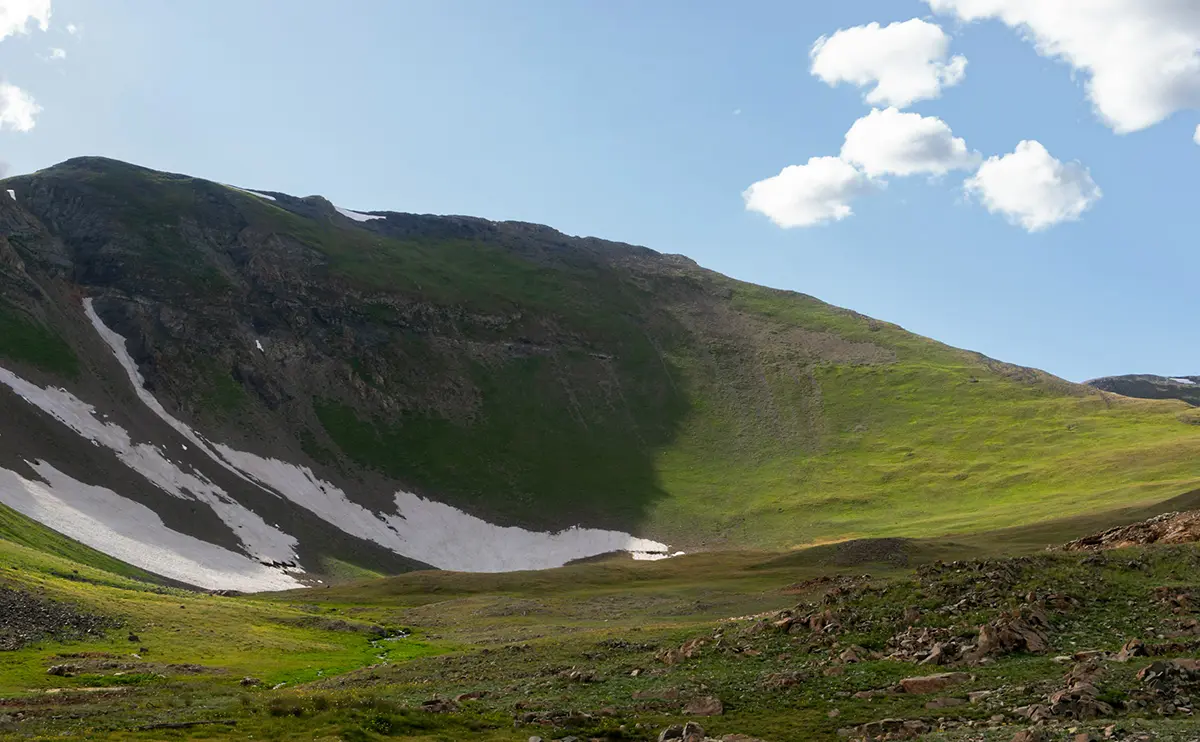
Governor Basin Turnoff: The Decision Point
Approximately 4.5 miles from Ouray, the road splits at a junction that requires immediate decision-making about whether to continue toward Yankee Boy Basin or detour into Governor Basin. This intersection represents more than just route selection—it's an assessment point where you evaluate time constraints, technical comfort level, and whether your experience warrants attempting both destinations or focusing on one.
Governor Basin offers its own rewards including historical mining structures and less-crowded wildflower viewing, but adds significant time and technical difficulty to your day. The Governor Basin route presents more challenging obstacles and narrower shelf roads than the direct Yankee Boy Basin approach, making it suitable primarily for experienced drivers with capable vehicles and flexible schedules.
Decision factors at the junction:
Time budget reality check: Adding Governor Basin to your itinerary extends the day by 2-3 hours minimum, which affects your ability to complete Yankee Boy Basin during optimal morning weather windows. Most visitors should prioritize Yankee Boy Basin during their first visit, saving Governor Basin for subsequent trips with better local knowledge.
Technical difficulty comparison: Governor Basin rates higher in difficulty than Yankee Boy Basin's main route, with tighter turns, more exposure, and rougher surfaces that challenge vehicle clearance and driver skill more severely. If the lower section to this junction felt demanding, Governor Basin will exceed your comfort zone.
Crowd avoidance strategy: Governor Basin sees roughly 20-30% of Yankee Boy Basin's traffic, offering more solitude for those willing to accept increased technical demands. However, this reduced traffic also means less assistance available if mechanical or navigation problems develop.
Pro tips for the decision point: First-time visitors should proceed directly to Yankee Boy Basin rather than attempting both destinations in one day—mastering the primary route provides experience base for evaluating whether Governor Basin makes sense for future trips. If you do choose Governor Basin, complete it first during morning hours while you're fresh and weather remains stable, then visit Yankee Boy Basin on your return if time and energy permit. Always inform someone of your route choice and expected return time, as this junction represents the last reliable cell service area for emergency communications.
Upper Technical Sections: Where Skill and Equipment Matter
Beyond the Governor Basin junction, the route to Yankee Boy Basin increases in technical demand through sustained grades, rock obstacles, shelf road exposure, and seasonal water crossings that separate adequately prepared adventurers from those discovering equipment or skill limitations under challenging conditions. This section extends for roughly 3-4 miles where difficulty remains consistently elevated rather than presenting isolated obstacles between recovery sections.
The road climbs through multiple switchbacks that combine tight turning radius with steep grades, requiring precise throttle control and appropriate gearing to maintain momentum without overheating or losing traction. Rock gardens appear with increasing frequency, demanding careful wheel placement and suspension articulation while grades prevent stopping to carefully assess each obstacle.
Upper section technical demands:
Sustained climbing grades: Extended sections maintain 12-15% grades that stress cooling systems already compromised by altitude effects. Temperature gauges require constant monitoring as conditions that cause overheating develop gradually until suddenly they don't—margins disappear faster than unprepared drivers anticipate.
Shelf road exposure: Several sections feature shelf roads cut into hillsides where the road narrows to single-lane width with significant drop-offs on the downhill side. These sections demand precise vehicle positioning, awareness of tire placement relative to road edges, and calm responses to oncoming traffic that necessitates careful passing coordination.
Rock obstacle navigation: Embedded rocks and loose stone create situations requiring continuous line selection and wheel placement decisions. The combination of obstacles and grades means you're solving technical puzzles while managing momentum—stop too much and you'll overheat, push too hard and you'll break something expensive hitting rocks at speed.
Seasonal water crossings: Snowmelt feeds several stream crossings that vary dramatically based on recent weather and time of season. Early season crossings can run deep and fast enough to create traction challenges and undercarriage submersion risks, while late season typically sees reduced water levels that pose minimal difficulty.
Pro tips for upper sections: Downshift before you need to rather than waiting until momentum drops and engine lugging begins—maintaining steady speed in appropriate gears prevents both overheating and traction loss on loose surfaces. When meeting oncoming traffic on shelf roads, yield uphill advantage by backing to wider sections if you're descending, as uphill vehicles face greater difficulty reversing while managing momentum. For water crossings, walk through first to verify depth and bottom conditions if the approach prevents clear visibility of exit conditions—recovering from a stalled vehicle in midstream complicates situations exponentially. Watch for oncoming dust clouds that signal approaching traffic on blind corners, and use horn signals to announce your presence when visibility limits awareness of other vehicles.
The Basin Itself: Managing Peak Season Crowds
After navigating the technical approach, Yankee Boy Basin opens into a broad alpine bowl where wildflowers carpet available terrain and Mount Sneffels dominates the western skyline. The basin provides parking areas, hiking trail access, and photography opportunities that reward the challenging approach—assuming you arrive during optimal timing windows and manage the logistical complications that peak season popularity creates.
Parking becomes competitive during peak bloom weekends, with limited formal areas filling by mid-morning and informal pull-offs claimed rapidly as late arrivals search for spots. The congestion creates situations where finding parking and maneuvering in tight spaces while other vehicles jockey for position tests patience and precision driving more than the technical approach did.
Basin features and considerations:
Parking logistics during peak season: Arrive before 8 AM during peak bloom weekends to secure parking in established areas rather than searching for marginal pull-offs or creating new parking spots that damage vegetation. Parking fills progressively earlier as wildflower reports spread through social media and local channels.
Hiking opportunities beyond the road terminus: The Blue Lakes Trail departs from the upper basin, offering access to alpine lakes and extended hiking for those wanting to explore beyond vehicle-accessible areas. This trail gains additional elevation through wildflower meadows that often peak slightly later than basin-floor displays, extending your viewing opportunities across elevation bands.
Wright Lake views: A short hike from the upper parking areas reaches Wright Lake, providing classic reflection shots of Mount Sneffels when morning conditions create mirror-calm water surfaces. This location represents one of Colorado's most photographed scenes during peak wildflower season.
Mount Sneffels backdrop: The 14,158-foot peak creates dramatic backdrop for wildflower photography throughout the basin, with various foreground compositions available depending on bloom concentration locations. Late morning side-lighting emphasizes the peak's rugged character while afternoon storms often build over the summit creating dynamic cloud formations—right before they move into the basin and force retreat.
Pro tips for the basin: Plan 2-3 hours minimum for photography and exploration once you reach the basin—rushing through after the challenging approach wastes the opportunity that justified the effort. Bring wide-angle lenses for capturing wildflower foregrounds with mountain backdrops, and telephoto options for isolating flower details and distant peak features. Respect fragile alpine vegetation by staying on established trails and avoiding the temptation to walk into flower fields for "better angles"—your footprints persist for years in these slow-recovery environments. If afternoon weather deteriorates, begin your descent immediately rather than waiting for conditions to worsen—the technical sections you navigated upward become more challenging in rain, with reduced visibility and potentially slick surfaces that complicate already-demanding driving situations.
Vehicle Requirements for Yankee Boy Basin Success
The gap between vehicles that complete Yankee Boy Basin successfully and those that limp back to Ouray with overheating engines, damaged undercarriages, or worse comes down to specific capabilities that address the route's actual demands rather than general "off-road readiness." Understanding these requirements prevents expensive lessons about the difference between equipment that sounds adequate and equipment that actually works when altitude, grades, and obstacles combine.
Essential Capabilities
Your vehicle needs more than just 4WD and optimistic thinking to handle Yankee Boy Basin's combination of sustained grades, rock obstacles, and shelf road navigation. The specific measurements and capabilities that determine success aren't arbitrary—they reflect the physical realities of clearance requirements, traction demands, and approach angles that the route presents repeatedly throughout the upper sections.
Ground clearance becomes critical when navigating embedded rocks that protrude 8-10 inches above surrounding road surface. Stock clearance on most SUVs ranges from 7-9 inches, which leaves minimal margin for error when attempting obstacles that reward 10+ inches of clearance measured at the vehicle's lowest point including differential, exhaust, and fuel tank. Contact with obstacles at speed or under load doesn't just scrape paint—it punctures oil pans, tears exhaust systems, and damages drivetrain components that transform your adventure into an expensive recovery situation.
The 4WD versus AWD distinction matters more at Yankee Boy Basin than on maintained forest roads where surface conditions remain relatively consistent. True 4WD systems with low-range transfer cases provide the gearing multiplication necessary for technical rock obstacles and steep grades where maintaining momentum without excessive wheel spin becomes critical. AWD systems designed for highway traction assistance lack the low-range gearing and robust construction that sustained technical terrain demands—they work fine until they don't, at which point you're discovering limitations miles from assistance.
DO's for vehicle capabilities:
DO verify 10+ inches of ground clearance measured at the lowest point with full fuel, gear, and passengers—not manufacturer specs measured with empty vehicle
DO confirm your 4WD system includes low-range transfer case with at least 2:1 reduction ratio for technical obstacles and sustained grades
DO check approach angles exceed 28 degrees and departure angles exceed 24 degrees to clear rock obstacles without front or rear bumper contact
DO equip aggressive all-terrain tires with tread depth exceeding 10/32nds for mixed surface traction including rock, loose gravel, and potential mud
DO verify tire sidewall construction rated for sharp rock contact rather than highway-oriented designs that puncture easily on trail surfaces
DON'Ts for vehicle capabilities:
DON'T attempt Yankee Boy Basin in crossover SUVs with AWD systems designed for highway use—they lack clearance, gearing, and durability for sustained technical terrain
DON'T assume stock vehicles meet requirements without verification—manufacturer "off-road packages" often provide minimal capability increases that prove inadequate
DON'T rely on sedan or wagon platforms regardless of drivetrain—fundamental architecture limitations prevent successful navigation of technical sections
DON'T ignore approach angle limitations when evaluating capability—front bumper contact happens suddenly and expensively when angles prove inadequate
DON'T convince yourself that "careful driving" compensates for inadequate clearance—the route doesn't care about your caution when rocks exceed your ground clearance
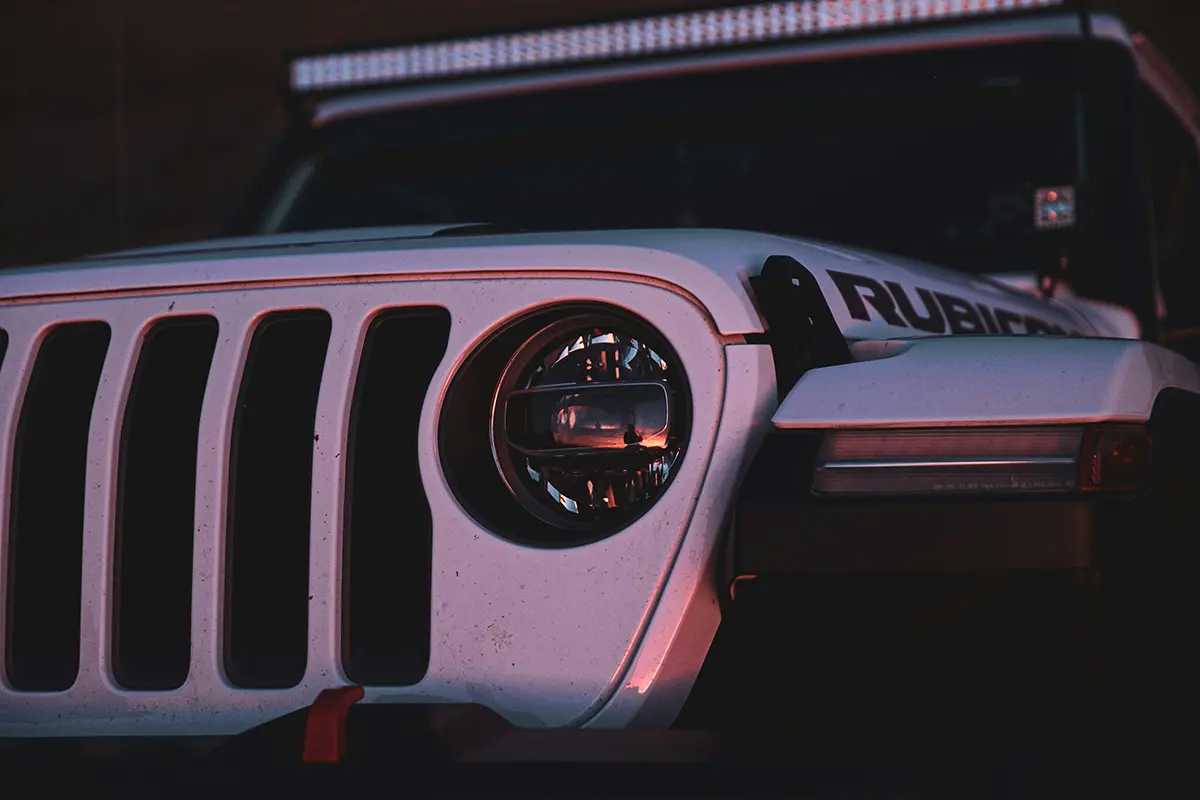
Cooling System Demands
Altitude and sustained grades combine to create cooling system demands that exceed what most vehicles encounter during normal operation, including typical off-road adventures at lower elevations. The atmospheric pressure reduction at 11,000+ feet decreases radiator efficiency by 25-30% while engine loads from sustained climbing generate maximum heat production—creating conditions where marginal cooling systems overheat predictably rather than occasionally.
Stock cooling systems work adequately for the driving conditions manufacturers anticipate, which typically don't include sustained 12-15% grades at extreme altitude. Modern vehicles with adequate cooling capacity handle these demands, but older vehicles, those with high-mileage cooling systems showing degraded efficiency, or vehicles modified for increased power without corresponding cooling upgrades often discover their limitations during the sustained climbing sections where stopping to cool down becomes necessary repeatedly.
Temperature gauge monitoring transforms from casual awareness to critical responsibility on routes like Yankee Boy Basin. The gradual temperature creep that develops during sustained climbing doesn't announce itself dramatically until you're approaching overheat conditions where engine damage becomes likely if you continue pushing. Watching gauges continuously and responding to early temperature increases—by reducing speed, downshifting for better airflow, or stopping briefly—prevents the expensive consequences that develop when you ignore warning signs until coolant boils over.
DO's for cooling system management:
DO upgrade to oversized radiator capacity if planning regular high-altitude adventures—increased capacity provides margin that stock systems lack at elevation
DO verify cooling fan operation including electric fan function and mechanical fan clutch engagement before attempting sustained grades
DO monitor temperature gauges continuously during climbs rather than responding only after overheat warnings appear
DO carry extra coolant and basic tools for addressing minor leaks or topping off systems if needed
DO plan cooling stops at strategic wide spots before temperature reaches critical levels rather than emergency stops in inconvenient locations
DON'Ts for cooling system management:
DON'T ignore early temperature increases hoping they'll stabilize—at altitude, temperatures continue climbing once margins disappear
DON'T remove thermostat thinking it improves cooling—proper operating temperature remains necessary for efficient combustion and oil viscosity
DON'T rely on aftermarket additives as substitutes for proper cooling capacity—they provide minimal benefit in properly functioning systems
DON'T continue climbing when temperature gauge enters warning zones—engine damage develops rapidly once coolant begins boiling
DON'T assume newer vehicles automatically handle altitude demands—modern systems often run closer to thermal limits for efficiency, leaving less margin for extreme conditions
Protective Modifications
Rock obstacles, embedded stones, and occasional undercarriage contact with terrain features create situations where unprotected vehicles suffer expensive damage while properly equipped vehicles continue without incident. The difference between cosmetic scrapes and disabled vehicles often comes down to whether vulnerable components have protection that absorbs impacts rather than transmitting forces directly to expensive mechanical parts.
Skid plates protect oil pans, transmission cases, transfer cases, and fuel tanks from the rock strikes that occur even with careful line selection when navigating technical sections. Stock skid plates on vehicles marketed as "off-road capable" often provide minimal protection over limited areas—aftermarket options offering comprehensive coverage of all vulnerable undercarriage components make the difference between completing the route and calling for expensive recovery after puncturing critical systems.
Rock sliders serve dual purposes: protecting rocker panels and lower body sections from rock contact while providing solid mounting points for jacking and recovery operations if necessary. The body-on-frame construction that benefits from rock sliders takes impacts that would create expensive body damage on unprotected vehicles and transfers forces to structural mounting points designed to handle loads.
Why Professional Rental Services Make Sense
The choice between attempting Yankee Boy Basin in your personal vehicle versus partnering with professional rental services comes down to a straightforward calculation: do you want to invest thousands of dollars modifying a vehicle for occasional use, accept insurance coverage gaps for technical terrain, and navigate route conditions without local expertise—or would you rather show up and drive a proven vehicle backed by comprehensive support?
Purpose-Built Fleet Advantages
Ready to experience Yankee Boy Basin's wildflower spectacle without the vehicle modification headaches? Cliffhanger Jeep Rentals provides purpose-built vehicles specifically configured for San Juan Mountain terrain, eliminating the guesswork and expense of preparing your personal vehicle for high-altitude technical challenges.
Professional rental fleets exist because modifying personal vehicles for specialized use rarely makes economic sense for occasional adventurers. The cooling system upgrades, protective modifications, and suspension enhancements that transform stock SUVs into capable trail vehicles cost $5,000-$15,000 depending on starting platform and modification depth. These expenses make sense for vehicles that see regular technical use—they become questionable investments for annual or occasional trips where rental costs would take years to exceed modification expenses.
Beyond pure economics, rental vehicles come with something personal ownership can't easily replicate: proven performance on the specific routes you're attempting. Cliffhanger's fleet vehicles navigate Yankee Boy Basin repeatedly throughout each season, revealing which modifications actually matter versus which sound impressive but provide minimal practical benefit. This operational testing eliminates the trial-and-error process where personal vehicle owners discover their modification choices prove inadequate only after committed to technical sections miles from assistance.
Keep in mind:
Insurance coverage for your personal vehicle typically excludes high-altitude technical terrain—reading policy fine print often reveals that the "off-road coverage" you assumed you had specifically excludes trails like Yankee Boy Basin
Rental fleet vehicles include comprehensive insurance designed for technical trail use—damage that would create expensive insurance claims or out-of-pocket costs on personal vehicles becomes the rental company's operational cost rather than your financial emergency
Modification costs for occasional use rarely justify the investment—spending $10,000 upgrading your daily driver for one or two annual trail trips makes less financial sense than renting appropriate vehicles when needed
Rental vehicles eliminate the maintenance burden of modified systems—upgraded cooling systems, heavy-duty suspensions, and protective armor require ongoing maintenance that adds to total ownership costs beyond initial modification expenses
Professional rental services transform Yankee Boy Basin from a project requiring months of vehicle preparation into an adventure that begins the moment you pick up keys to a proven, properly equipped vehicle.
Local Expertise Value
Vehicle capability represents only half the success equation for Yankee Boy Basin—the other half comes from current condition intelligence and route knowledge that takes seasons to develop through direct experience. Professional rental operations accumulate this expertise through daily interactions with trail conditions, weather patterns, and seasonal variations that casual visitors simply can't match without years of repeated visits.
Trail conditions change weekly during peak season as weather affects road surfaces, water crossing depths, and accessibility of upper sections. What worked perfectly last weekend might present entirely different challenges this weekend after afternoon thunderstorms create muddy sections or snowmelt increases stream flow rates. Rental operations maintain current intelligence through their fleet's daily returns, building a real-time picture of conditions that guidebook information and internet forums can't provide.
Local expertise advantages from professional rental operations:
Current wildflower bloom reports based on recent customer feedback—knowing which elevation bands currently show peak blooms versus which remain pre-peak or post-peak allows timing optimization within the narrow optimal window
Weather timing strategies specific to Yankee Boy Basin's microclimate—understanding how afternoon storm development patterns differ between Governor Basin and the main route informs morning departure timing and turn-around decisions
Alternate route knowledge for varying conditions—when main route sections present unusual challenges due to recent weather, local operations know which variations or timing adjustments improve success probability
Emergency support capabilities backed by local relationships—professional operations maintain connections with local recovery services, medical facilities, and emergency responders that prove invaluable when situations exceed planned parameters
Quick tips for leveraging local expertise: Book rental consultations that include trail briefings rather than just vehicle pickups—the 15-20 minutes spent reviewing current conditions and route recommendations provides value exceeding the vehicle rental itself in some cases. Ask specific questions about recent customer experiences, weather forecasts for your planned timing, and any unusual conditions developing. Don't ignore advice suggesting timing adjustments or route modifications—local expertise accumulated over thousands of trips trumps your optimistic planning every time.
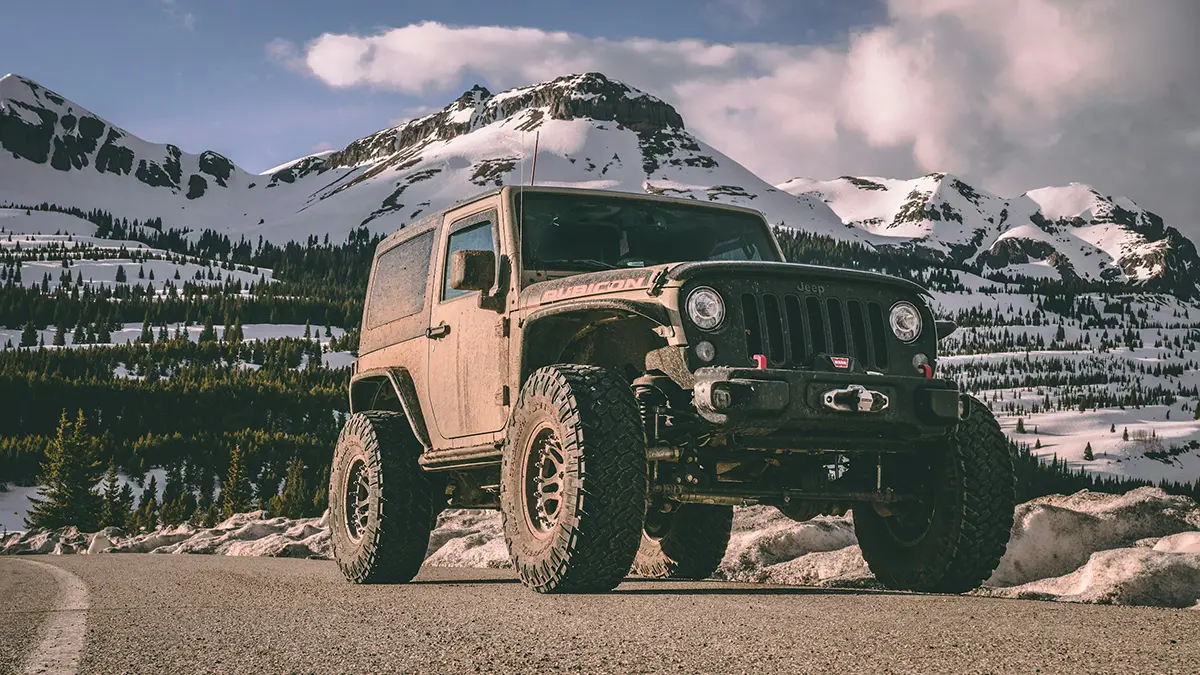
Cliffhanger Jeep Rentals Advantages
Cliffhanger Jeep Rentals operates from Ouray—literally the gateway to Yankee Boy Basin—providing advantages that distant rental operations or personal vehicle ownership can't match. The proximity means fleet vehicles navigate these specific trails daily during peak season, accumulating route-specific experience that translates directly into vehicle configuration decisions, maintenance protocols, and customer guidance that works for actual conditions rather than theoretical scenarios.
Fleet specifications reflect real operational experience on San Juan Mountain trails including Yankee Boy Basin, Imogene Pass, and Engineer Pass. Vehicles feature upgraded cooling systems proven adequate for sustained high-altitude climbing, comprehensive skid plate protection positioned based on observed contact patterns, and tire selections balanced for mixed surface performance across rock, gravel, and seasonal mud. These aren't modifications chosen from catalog descriptions—they're solutions refined through operational feedback where inadequate choices reveal themselves immediately.
Cliffhanger advantages for Yankee Boy Basin success:
Fleet vehicles specifically configured for San Juan terrain demands including the sustained grades, rock obstacles, and altitude effects that define Yankee Boy Basin challenges
Local Ouray and Telluride area expertise accumulated through daily operations rather than occasional visits—staff members know current conditions through direct fleet feedback and personal familiarity
Comprehensive insurance coverage designed for technical trail use—protection extends to scenarios that void personal vehicle policies, eliminating the financial risk that accompanies personal vehicle trail use
No long-term ownership burden for specialized equipment used occasionally—rent capability when needed rather than maintaining modified vehicles year-round for seasonal use
Emergency support backed by local relationships and operational experience—if situations exceed planned parameters, professional operations provide response capabilities that isolated personal vehicle owners can't match
The proximity factor matters more than it might seem initially. When your rental base sits in Ouray, the operation deals with Yankee Boy Basin conditions daily rather than relying on secondhand reports or outdated information. Staff members often run routes personally, maintaining firsthand knowledge of current challenges and optimal timing. This immediate operational feedback loop creates expertise depth that distant operations or personal owners can't easily replicate.
Choosing professional rental services transforms Yankee Boy Basin from a complex project requiring significant vehicle investment and expertise development into a straightforward adventure where you focus on experiencing Colorado's premier wildflower display rather than worrying whether your vehicle and knowledge prove adequate for the challenges ahead.
The Reality of Yankee Boy Basin Success
Success at Yankee Boy Basin isn't guaranteed by good intentions or expensive equipment alone—it requires the convergence of appropriate preparation, timing intelligence, weather awareness, and driving competency that separates memorable achievements from expensive lessons. Understanding what actually determines outcomes helps you prepare effectively rather than discovering critical gaps after you're committed to challenging sections miles from assistance.
What Success Actually Requires
The difference between adventurers who successfully experience Yankee Boy Basin's wildflower spectacle and those who turn back frustrated or create recovery situations comes down to specific preparations and capabilities that address the route's actual demands. These requirements aren't arbitrary obstacles—they reflect the physical realities of high-altitude technical terrain where margins disappear when any critical element proves inadequate.
Essential success factors:
Appropriate vehicle preparation: Your vehicle needs genuine capability that matches the route's demands, not just general "off-road readiness" claims from marketing materials. This means verified ground clearance measurements, functional 4WD with low-range gearing, adequate cooling capacity proven at altitude, and protective modifications that prevent rather than just minimize damage.
Wildflower timing intelligence: Peak bloom windows shift by 1-3 weeks annually based on snowpack, spring temperatures, and early summer precipitation patterns. Success requires monitoring current season conditions rather than assuming historical timing applies—what worked perfectly last July might miss peak blooms entirely this year if spring arrived late or early.
Weather flexibility and backup plans: Mountain weather operates on schedules that don't accommodate rigid itineraries. Successful adventurers build flexibility into their plans, maintaining the option to adjust departure timing, postpone attempts when forecasts show unfavorable patterns, or execute backup activities when weather makes Yankee Boy Basin inadvisable.
Technical driving competency: Yankee Boy Basin demands sustained technical driving through varied terrain including rock gardens, sustained grades, shelf roads, and seasonal water crossings. You need demonstrated capability navigating similar terrain at altitude, not theoretical skills or lower-elevation experience that hasn't been tested under comparable conditions.
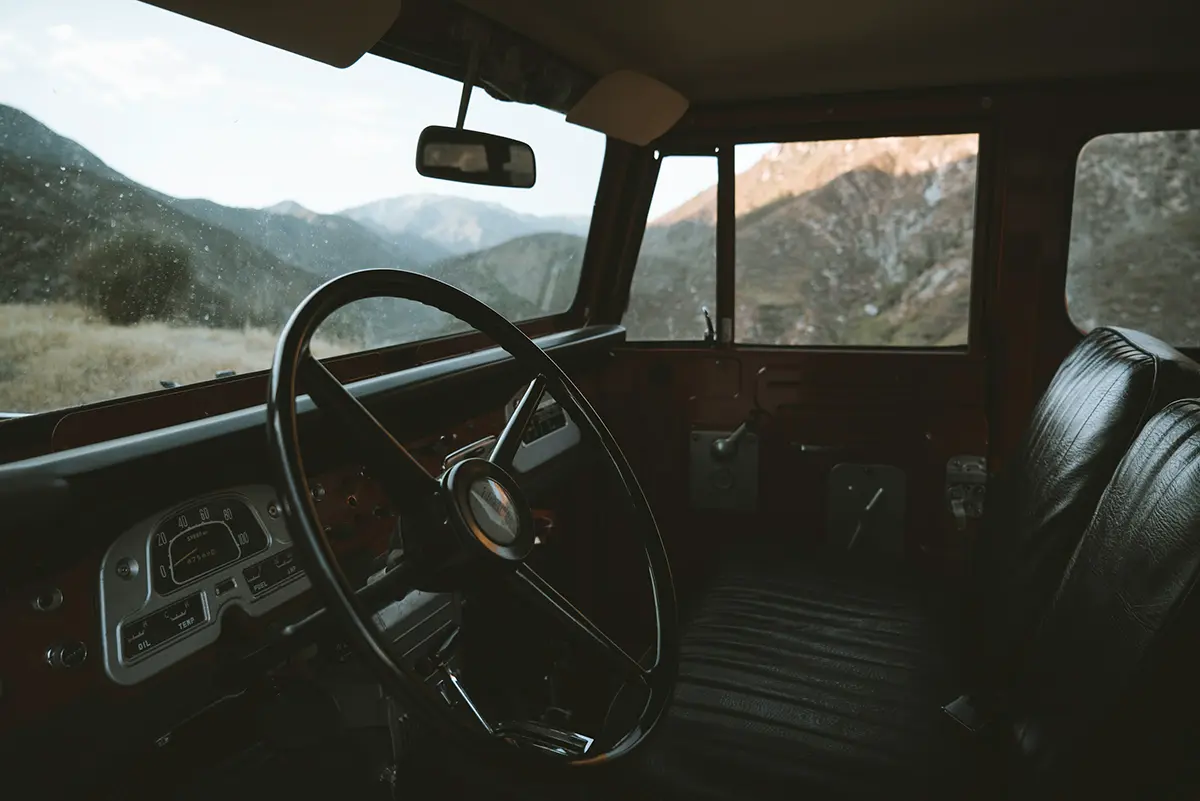
Experience Yankee Boy Basin the Right Way
Ready to experience Colorado's premier wildflower destination during peak bloom season? Cliffhanger Jeep Rentals transforms Yankee Boy Basin from a complex preparation challenge into a straightforward adventure where you focus on experiencing alpine beauty rather than worrying about vehicle capability or local conditions knowledge.
Our purpose-built fleet provides the specialized vehicles that Yankee Boy Basin's combination of altitude, sustained grades, and technical terrain demands—vehicles modified through operational experience on these specific trails rather than generic off-road configurations that sound adequate but prove marginal when conditions get challenging. Enhanced cooling systems handle sustained climbing at 11,000+ feet elevation where stock configurations overheat. Comprehensive skid plate protection prevents the undercarriage damage that ends adventures prematurely. Proven tire selections provide traction across rock, gravel, and seasonal mud without compromising durability.
Beyond vehicle capability, our local Ouray expertise provides the timing intelligence and route knowledge that takes seasons to develop through direct experience. We maintain current wildflower bloom reports based on daily customer feedback, weather timing strategies specific to Yankee Boy Basin's microclimate patterns, and condition updates that reflect actual trail status rather than outdated guidebook information. When you rent from operations based at the trailhead rather than distant locations, you access expertise accumulated through thousands of successful trips on the exact routes you're attempting.
Comprehensive insurance coverage eliminates the financial risk that accompanies personal vehicle trail use—protection designed specifically for technical terrain that standard policies exclude. Emergency support capabilities backed by local relationships provide response options that isolated personal vehicle owners can't match when situations exceed planned parameters. No long-term ownership burden for specialized equipment you'll use occasionally. No modification costs trying to transform daily drivers into trail-capable vehicles. No learning curve discovering what actually works through expensive trial and error.
Contact Cliffhanger Jeep Rentals today to book your Yankee Boy Basin wildflower adventure. Let us handle the vehicle preparation, equipment verification, and local expertise while you focus on experiencing one of Colorado's most spectacular alpine destinations during the brief window when wildflowers carpet the basin beneath Mount Sneffels' dramatic peak. Transform potential challenges into confident achievements—because experiencing Yankee Boy Basin's legendary wildflower displays shouldn't require months of preparation and thousands of dollars in vehicle modifications when proven solutions already exist.
